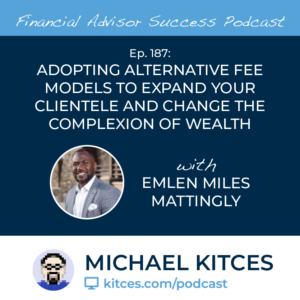Enjoy the current installment of "weekend reading for financial planners" – this week's edition kicks off with the latest on the HEALS Act, the proposed legislation from Senate Republicans that may become the 5th economic stimulus bill in response to the coronavirus pandemic but is currently still mired in debate, not only between Republicans and Democrats, but also within the Republican party, and raising questions of how quickly the trillion-dollar stimulus will actually get passed and what form it will end out taking.
Also in the news this week was an announcement by the Democrats of their official "Party Platform" should they take leadership in Washington, which for financial advisors includes a notable provision of lifting the standards for all financial advisors, effectively signaling that if the Democrats win in November, there may be a new movement in 2021 to replace Regulation Best Interest and/or the Department of Labor's proposed Reg-BI-coordinating changes and implement a more full-force fiduciary obligation for all investment advisers and broker-dealers.
From there, we have a number of articles about referral marketing, including the recognition that so few consumers are unhappy with their advisors that just waiting for prospects to ask an existing client "Do you know a good advisor?" (in the hopes of being referred by your client in the moment) probably isn't enough to drive referrals, how even great advisors fail to get referrals because they're not specific enough about the problems they solve, why advisors also often fail to get referrals because existing clients don't know who to watch for that would be appropriate to refer to their advisor (i.e., a lack of clear positioning in the marketplace), and how to increase referrals by (re-)focusing not on getting more referrals from everyone but just a few people who are most likely and interested to refer and may become 'power-referrers' for the advisor.
We also have several articles on insurance, including a look at how advisors and their clients are making health insurance decisions in the face of pandemic layoffs (including how to potentially 'game' the COBRA system with a newly-extended 120-day window to apply for coverage... but only if and when it's really needed?), how the pandemic may ironically be improving the financial health of long-term care insurers by sadly cutting claims short (but at least potentially stabilizing pricing in the process), and the rising concerns of how indexed universal life insurance is being illustrated (or potentially, over-illustrated) given the increased risk that returns for the coming decade will not be nearly as rosy as they were for the past 10 years.
We wrap up with three interesting articles, all around the theme of making slow but steady incremental improvements for ourselves: the first explores how the key to change is not about whether we engage in (new) activities every day or get the desired outcomes but whether we can honestly say we gave it our "best effort" (which creates the kind of 'focused practice' that ultimately leads to results); the second looks at the behaviors that best provide us resiliency in the face of the inevitable life setbacks that may come as we try to achieve our goals; and the last provides a powerful reminder that in the end, long-term success isn't just about going through the right routines but engaging in "practice" that helps us find and regain the focus we need to succeed (while recognizing that, as with any effort that requires practice, it will take time, and setbacks along the way and disruptions to the typical routine are normal and to be expected!).
Enjoy the 'light' reading!

 Welcome back to the 187th episode of Financial Advisor Success Podcast!
Welcome back to the 187th episode of Financial Advisor Success Podcast! Welcome back to the 186th episode of Financial Advisor Success Podcast!
Welcome back to the 186th episode of Financial Advisor Success Podcast!
